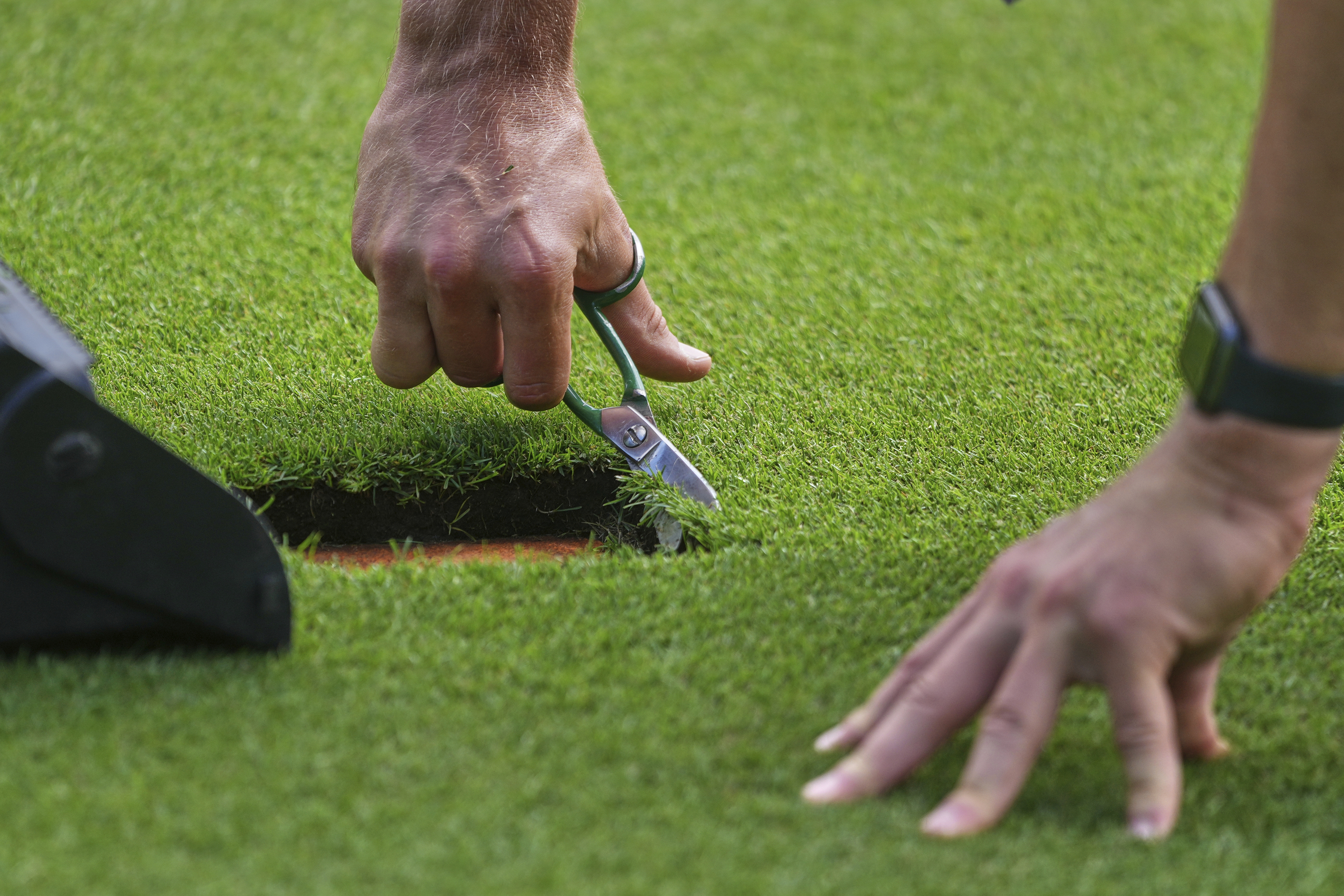In the summer of 2023, just before winning his first Wimbledon, Carlos Alcaraz trained on the Monte Romero athletics tracks, at the University of Murcia campus. Did he want to improve his sprints on the track? Did he want to strengthen his shots by throwing javelins? None of that. Alcaraz only wanted to step on natural grass, run on natural grass, jump on natural grass, and the central court of the venue was the closest place to his home to do so. His success at Roland Garros in the last two years has reduced his schedule, and his preparation on grass has focused on the Queen's ATP 500, but those sessions in Murcia highlight the rarity: a tennis player from a country where there are barely any natural grass courts dominates at Wimbledon.
If he advances starting from his debut today against Fabio Fognini and on July 13th Alcaraz achieves his third consecutive title, he will become the most successful Spanish player at the English Grand Slam and will create a tradition practically out of nothing. "Grass is for cows," proclaimed Manolo Santana, champion in 1966. And it's starting to change. Although it also doesn't seem like grass will become the favorite surface for Spaniards.
"In Spain, maintaining grass courts is especially difficult. It requires more water, more care, it's a costly process. An expert from Wimbledon comes to oversee everything for our courts," says Benito Pérez Barbadillo, communication manager of the Mallorca ATP 250, which concluded this Saturday - with Tallon Griekspoor as the champion - an oasis of grass in the desert of clay and cement that is Spain. Thanks to the tournament, the only six natural grass courts in the entire country survive at the Mallorca Country Club.
A decade ago, the ATP circuit decided to separate Roland Garros from Wimbledon by an additional week, opening up the possibility of creating new tournaments. The German group E|motion, which had already rented the former Tennis Country Club Santa Ponça for a WTA competition, believed it was a good opportunity, and hence the miracle that there is currently some tennis on grass in Spain. "Many players prefer to stay training at Wimbledon, but those who need match practice appreciate being able to come to Mallorca. In England, the rain is unpredictable and can affect your preparation; that doesn't happen here. The problem is that we struggle to attract Spanish companies. That's our challenge. Almost all sponsors are German or from the ATP circuit," expresses Pérez Barbadillo, who has seen Novak Djokovic - in doubles - Daniil Medvedev, and Stefanos Tsitsipas in the different editions of the Mallorcan tournament.
Before the Mallorca Championships were created, Spain had gone many years without a single natural grass court, and several experiments had failed. In 1994, for example, the Real Club de Tenis López-Maeso in Madrid inaugurated its green courts with a veterans event where Björn Borg, Ilie Nastase, Guillermo Vilas, José Luis Clerc, and Santana himself were present. The idea was appealing: there was a DecoTurf court, the hard surface of the US Open, and a Wimbledon grass court. But the cost outweighed the benefit. The construction cost 10 million pesetas, it took three attempts for the grass to settle, and a couple of years later, the project was abandoned.
In 2014, another case, Villanueva Golf in El Puerto de Santa María inaugurated three natural grass courts, and the proposal lasted even less. The Wimbledon atmosphere created around it - only white attire was allowed, strawberries were sold... - failed to attract the necessary clientele to cover the maintenance costs.
"I went to Wimbledon, met with Neil Stubley, the head groundskeeper of the Grand Slam, the person in charge of the tournament's grass, and he told me that the grass wouldn't hold up in Cádiz, that it was too arid, that it was impossible. We used a different mix of ryegrass, English grass, and it was impeccable. It needed its water, its cocktail, its maintenance, but it attracted a lot of people, especially tourists. Unfortunately, the facility management decided to close the courts," recalls Oliver Günther, the driving force behind the Cadiz project, which even planned to create a Challenger tournament on the site. Both the Real Club de Tenis López-Maeso in Madrid and Villanueva Golf offered their courts to Spanish players for training, but few showed interest.
Before Alcaraz, only Santana, Conchita Martínez (1994), Nadal (2008 and 2010), and Garbiñe Muguruza (2017) had won at Wimbledon, and in fact, only five more had lifted other trophies. Andrés Gimeno and Feliciano López won in Eastbourne, Arantxa Sánchez Vicario celebrated in Newport, and David Ferrer and Roberto Bautista triumphed in Hertogenbosch. That's it. A tennis player from a country where there are barely any natural grass courts dominates at Wimbledon. Quite a rarity.
